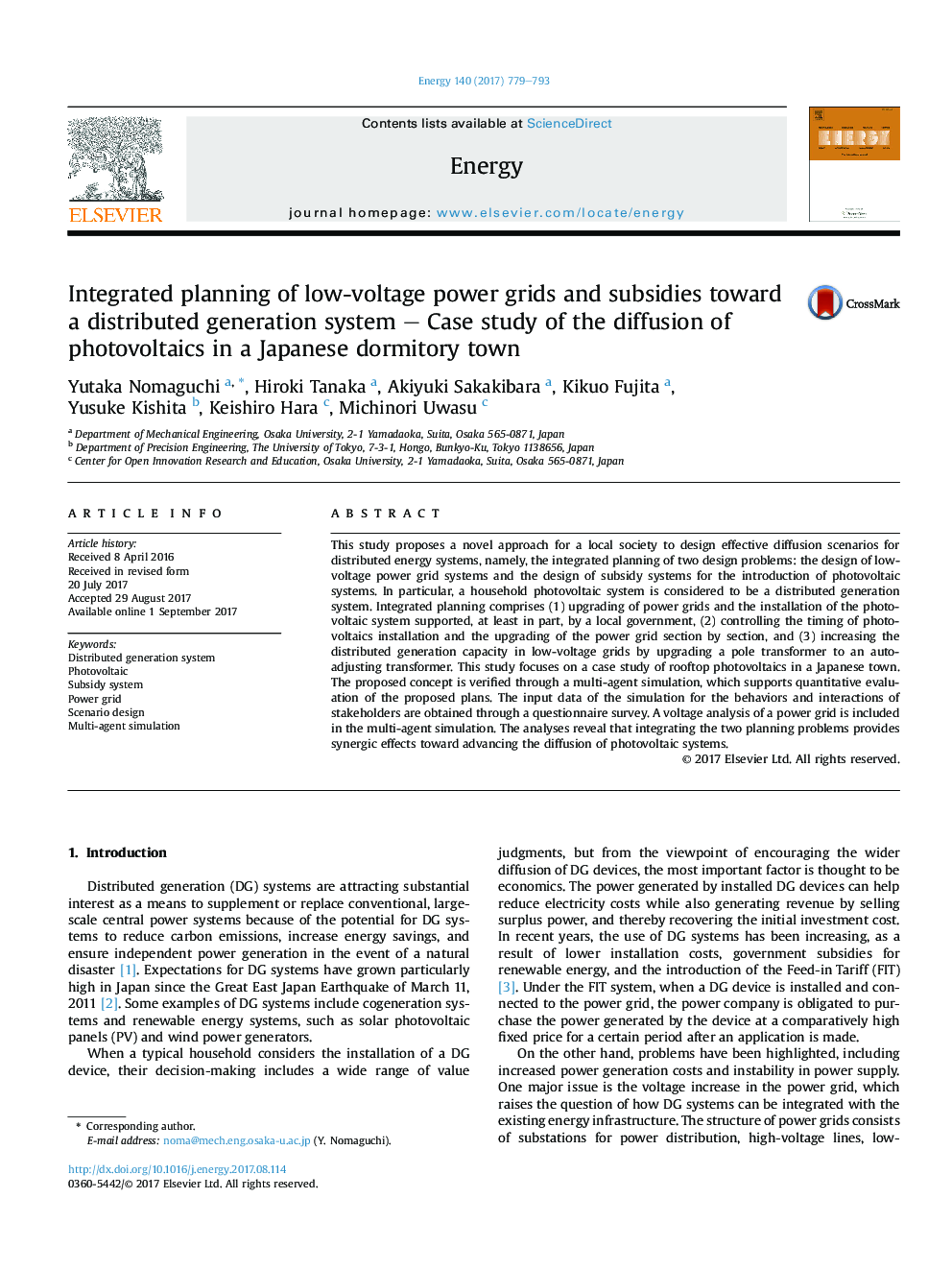| Article ID | Journal | Published Year | Pages | File Type |
|---|---|---|---|---|
| 8072668 | Energy | 2017 | 15 Pages |
Abstract
This study proposes a novel approach for a local society to design effective diffusion scenarios for distributed energy systems, namely, the integrated planning of two design problems: the design of low-voltage power grid systems and the design of subsidy systems for the introduction of photovoltaic systems. In particular, a household photovoltaic system is considered to be a distributed generation system. Integrated planning comprises (1) upgrading of power grids and the installation of the photovoltaic system supported, at least in part, by a local government, (2) controlling the timing of photovoltaics installation and the upgrading of the power grid section by section, and (3) increasing the distributed generation capacity in low-voltage grids by upgrading a pole transformer to an auto-adjusting transformer. This study focuses on a case study of rooftop photovoltaics in a Japanese town. The proposed concept is verified through a multi-agent simulation, which supports quantitative evaluation of the proposed plans. The input data of the simulation for the behaviors and interactions of stakeholders are obtained through a questionnaire survey. A voltage analysis of a power grid is included in the multi-agent simulation. The analyses reveal that integrating the two planning problems provides synergic effects toward advancing the diffusion of photovoltaic systems.
Related Topics
Physical Sciences and Engineering
Energy
Energy (General)
Authors
Yutaka Nomaguchi, Hiroki Tanaka, Akiyuki Sakakibara, Kikuo Fujita, Yusuke Kishita, Keishiro Hara, Michinori Uwasu,
